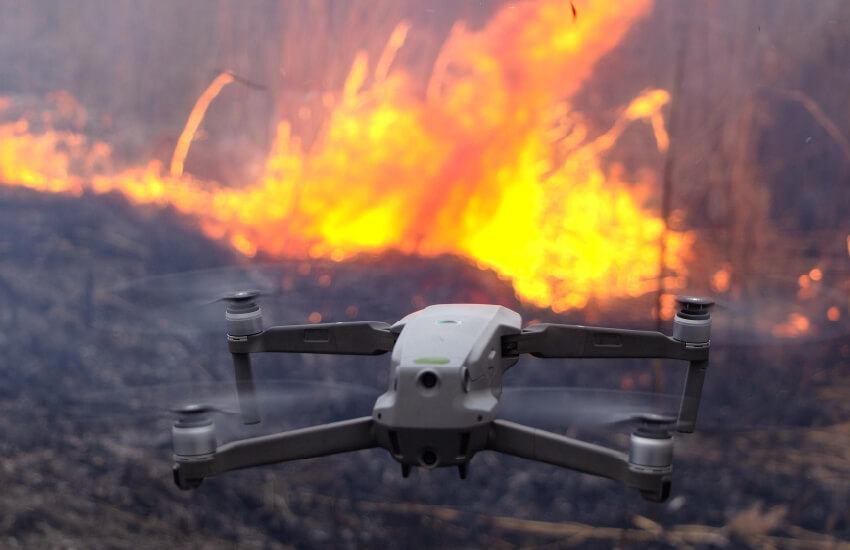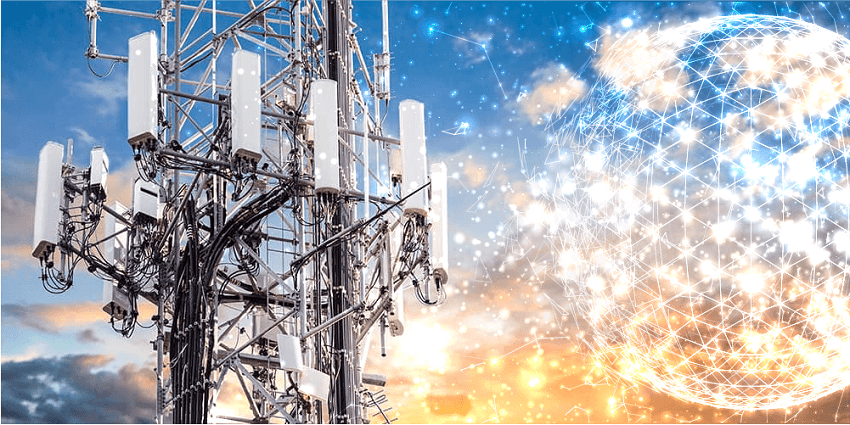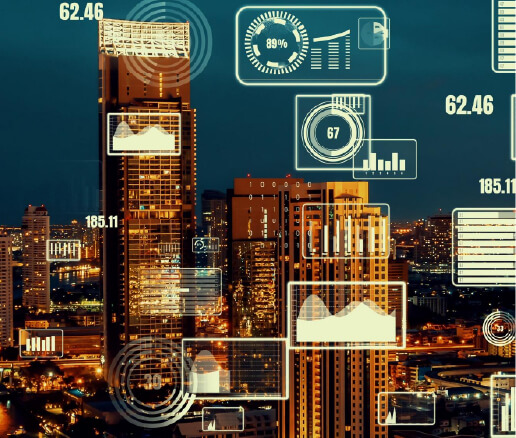by Webbing Team
What is critical IoT? With so many IoT applications around and overlapping classifications within the IoT ecosystem, it’s often hard to tell whether a certain use case or IoT system should be considered “critical IoT” or “consumer IoT”. Some scenarios are clearly critical, such as the use of drones by first responders. Others are more ambiguous, like smart locks and access control systems, that may fall under consumer convenience in a private home.
The term “critical IoT” usually refers to IoT applications and systems where failure, delay, or data breach could lead to serious consequences, such as major financial loss, operational disruption, environmental damage, and even injury or loss of life.
However, determining which IoT systems are critical is challenging because it depends heavily on context — what’s critical in one setting may be trivial in another. A device’s importance often hinges not on its function alone, but on how it’s used, what depends on it, and what the consequences of failure could be. Besides, use cases evolve over time, systems get increasingly interconnected, and the impact of a seemingly minor device failure can cascade into major disruptions. Moreover, different stakeholders may also assess risk differently, and without universal standards across industries, definitions of “critical” vary widely.
To determine whether an IoT system is truly critical, it’s helpful to assess five key factors: its operational role, real-time responsiveness, availability requirements, security risks, and the potential consequences of failure. For example, remote-controlled mining equipment, medical monitoring devices, or smart grid sensors qualify as critical IoT, while fitness trackers, or home appliances do not. Certain IoT devices, such as sensors, would be considered critical if used in predictive maintenance to prevent heavy machinery breakdowns, but the same sensors used for soil analysis in agriculture may not meet that threshold.

The Role of Cellular Connectivity in Critical IoT
Cellular connectivity, particularly 5G, plays a foundational role in enabling critical IoT. It’s not just a transport layer, but rather the backbone that ensures these high-stakes applications can function reliably, securely, and in real-time, even in harsh or changing conditions. Here are a few examples:
Remote Industrial Automation
In isolated and hazardous environments like mines or offshore oil platforms, cellular-connected IoT systems monitor equipment, support predictive maintenance, and enable remote operations. These locations often lack fixed infrastructure, making cellular the only feasible way to ensure reliable, real-time data transmission and remote control, which is critical for both safety and productivity.
Emergency Response
First responders use drones equipped with 4G/5G connectivity to stream real-time video and sensor data during emergencies such as natural disasters, fires, or search and rescue missions. Cellular networks enable rapid deployment, long-range operation, and immediate data access for decision-makers when every second counts. Moreover, first responders also rely on cellular networks for real-time communications and live video streaming from body worn cameras.
Smart Grid Monitoring and Control
Electric utilities use cellular-connected sensors and control units in their vast transmission and distribution networks to detect faults, monitor grid health, and balance loads in real time. Because many of these devices are deployed in rural or hard-to-reach areas, cellular connectivity ensures continuous operation and ultra-reliable communication for infrastructure that must never go offline.

Key Connectivity Requirements of Critical IoT
However different, critical IoT systems typically share several defining characteristics: ultra-reliable connectivity, low latency, high availability, and robust security.
Ultra-Reliable Communication
Whether it’s an industrial robot on a production line, a drone monitoring a wildfire, or a remote surgery system, the underlying network must guarantee consistent, uninterrupted connectivity. Technologies like 4G LTE and 5G, especially 5G URLLC (Ultra-Reliable Low-Latency Communication), were specifically designed to meet the demanding requirements of critical applications. Cellular can offer 99.999% availability and packet loss rate as low as 1 in 100,000 or even in 1,000,000. That level of reliability is far beyond what older wireless technologies or even standard Wi-Fi can offer, without creating a dedicated infrastructure.
Low Latency for Real-Time Control
Real-time responsiveness is essential in many critical IoT scenarios. For example, autonomous vehicles, remote-controlled mining equipment, or smart grid protection systems all rely on millisecond-level response times. Low latency ensures that data is transmitted and acted upon instantly, crucial when even slight delays can cause system failures, accidents, or missed opportunities.
5G cellular networks can deliver latency as low as 1 millisecond, enabling immediate responses in various applications across many verticals. That said, it is important to remember that actual latency depends on your connectivity provider’s core network architecture, as any data sent by an IoT device needs to travel all the way to the nearest data center before going to its destination.

Wide Coverage and Scalability
Many critical IoT deployments are remote, dispersed or mobile, such as offshore oil platforms, large-scale mining sites, nationwide smart grids, or logistics fleets. Ubiquitous cellular networks can provide broad coverage without the need for expensive fixed infrastructure. But what is probably more important in this context – they guarantee easy scalability. No matter if it’s enabling real-time asset monitoring, supporting mobile field teams, or linking thousands of distributed sensors, cellular technology delivers the flexibility and reach required to scale and sustain critical operations efficiently.
Robust Security and Private Networking
Security is paramount in critical IoT, especially for sectors like healthcare and defense. Cellular connectivity provides strong, built-in protections: SIM-based device authentication, end-to-end encryption, and support for private mobile networks. These private networks keep sensitive data within a secure, controlled perimeter and can be customized for specific performance and compliance needs. Additionally, 5G introduces network slicing, which allows organizations to isolate and prioritize traffic, ensuring that mission-critical data streams remain secure and uninterrupted even during network congestion.
Mobility and Seamless Handover
In many critical applications, connected devices aren’t stationary. Autonomous trucks navigating industrial sites or drones delivering medical supplies across cities rely on seamless handover between cellular base stations to maintain constant connectivity. Cellular networks, unlike Wi-Fi, can handle high-speed mobility, ensuring that communications are not disrupted as devices move from one cell to the other. This continuous connection is essential for applications that require real-time control and situational awareness.
For many critical IoT use cases, however, it’s not enough to rely on a single network. Multi-carrier connectivity is crucial, for devices must be able to switch between networks when they encounter coverage gaps or weak signals. This capability is equally important for stationary devices deployed in remote or hard-to-reach locations, where maintaining consistent data flow is vital for system performance, reliability, and safety.

Webbing’s Solutions Ensure Reliable Global Connectivity for Critical IoT
Webbing offers a connectivity solution that ensures global access to reliable and high-quality internet, with low latency and the best of class coverage. It provides secure and continuous internet connection for all types of cellular-enabled IoT devices, wherever they need it.
Webbing guarantees coverage in over 190 countries and territories through partnerships with more than 600 mobile operators. Webbing’s solutions support connectivity across multiple networks in any location, minimizing the risk of downtime due to network outages or poor coverage.
Webbing is a full MVNO, owning their core network, which is a fully redundant, distributed network with local breakouts, multiple network solutions, and data server redundancy. It helps Webbing provide stable connections, high data throughput and low latency to all devices. As such, Webbing’s IoT network is well suited to support mission-critical, high-data consumption type of use cases.
Our eSIM solution ensures failover connectivity with the capability of using multiple mobile carrier profiles, easily changing carriers at any time with zero integration, and an option to fall back from a failing profile to a different profile without any need to communicate with a remote server or deal with multiple SIM cards.
Webbing also offers a centralized way to manage eSIMs throughout their lifecycle via a portal. It allows for defining business rules that govern the automatic profile swap process, enabling devices to change the carrier independently in case of location change or connectivity loss, and provides visibility to profile usage and network events.
A flexible approach to data packages allows us to tailor our connectivity offering for every customer based on the type of connected devices and their data consumption needs as well as the locations where the devices are used, aiming at overall optimization of the total cost of operations for the client.
Contact us today to learn how Webbing can provide customized connectivity solutions for your critical IoT applications.




